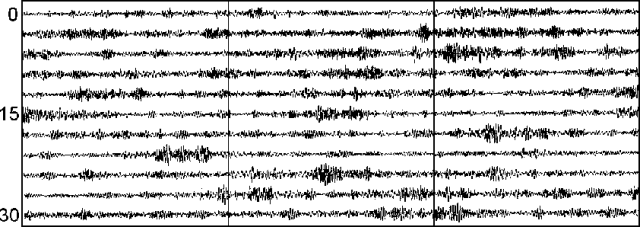Report on Llaima (Chile) — March 1998
Bulletin of the Global Volcanism Network, vol. 23, no. 3 (March 1998)
Managing Editor: Richard Wunderman.
Llaima (Chile) Small explosions, seismicity, and ash output increased during early April 1998
Please cite this report as:
Global Volcanism Program, 1998. Report on Llaima (Chile) (Wunderman, R., ed.). Bulletin of the Global Volcanism Network, 23:3. Smithsonian Institution. https://doi.org/10.5479/si.GVP.BGVN199803-357110
Llaima
Chile
38.692°S, 71.729°W; summit elev. 3125 m
All times are local (unless otherwise noted)
An 8 April 1998 report stated that during the past week Llaima increased its output of small explosions and ash emissions. The amplitude of seismic signals also increased, although the frequency of signals remained fixed at 1.5 Hz. Seismic amplitude (RSAM) values during March averaged about 25% above those of February. Daily RSAM estimates in March jumped to nearly 30 RSAM units on a few days but more frequently only reached about 10 RSAM units. A sample of the seismic record is shown on figure 9.
 |
Figure 10. Sample seismic record at Llaima (Meli station) on 22 April 1998 beginning at 0400. The tic marks are at 1-minute intervals. Courtesy of OVDAS. |
Geological Summary. Llaima, one of Chile's largest and most active volcanoes, contains two main historically active craters, one at the summit and the other, Pichillaima, to the SE. The massive, dominantly basaltic-to-andesitic, stratovolcano has a volume of 400 km3. A Holocene edifice built primarily of accumulated lava flows was constructed over an 8-km-wide caldera that formed about 13,200 years ago, following the eruption of the 24 km3 Curacautín Ignimbrite. More than 40 scoria cones dot the volcano's flanks. Following the end of an explosive stage about 7200 years ago, construction of the present edifice began, characterized by Strombolian, Hawaiian, and infrequent subplinian eruptions. Frequent moderate explosive eruptions with occasional lava flows have been recorded since the 17th century.
Information Contacts: Gustavo Fuentealba1 and Paola Peña S., Observatorio Volcanológico de Los Andes del Sur (OVDAS), Manantial 1710-Carmino del Alba, Temuco, Chile; 1Universidad de La Frontera (UFRO), Departamento Ciencias Fisicas, Universidad de la Frontera, Avda. Francisco Salazar 01145, Casilla 54-D, Temuco, Chile.

